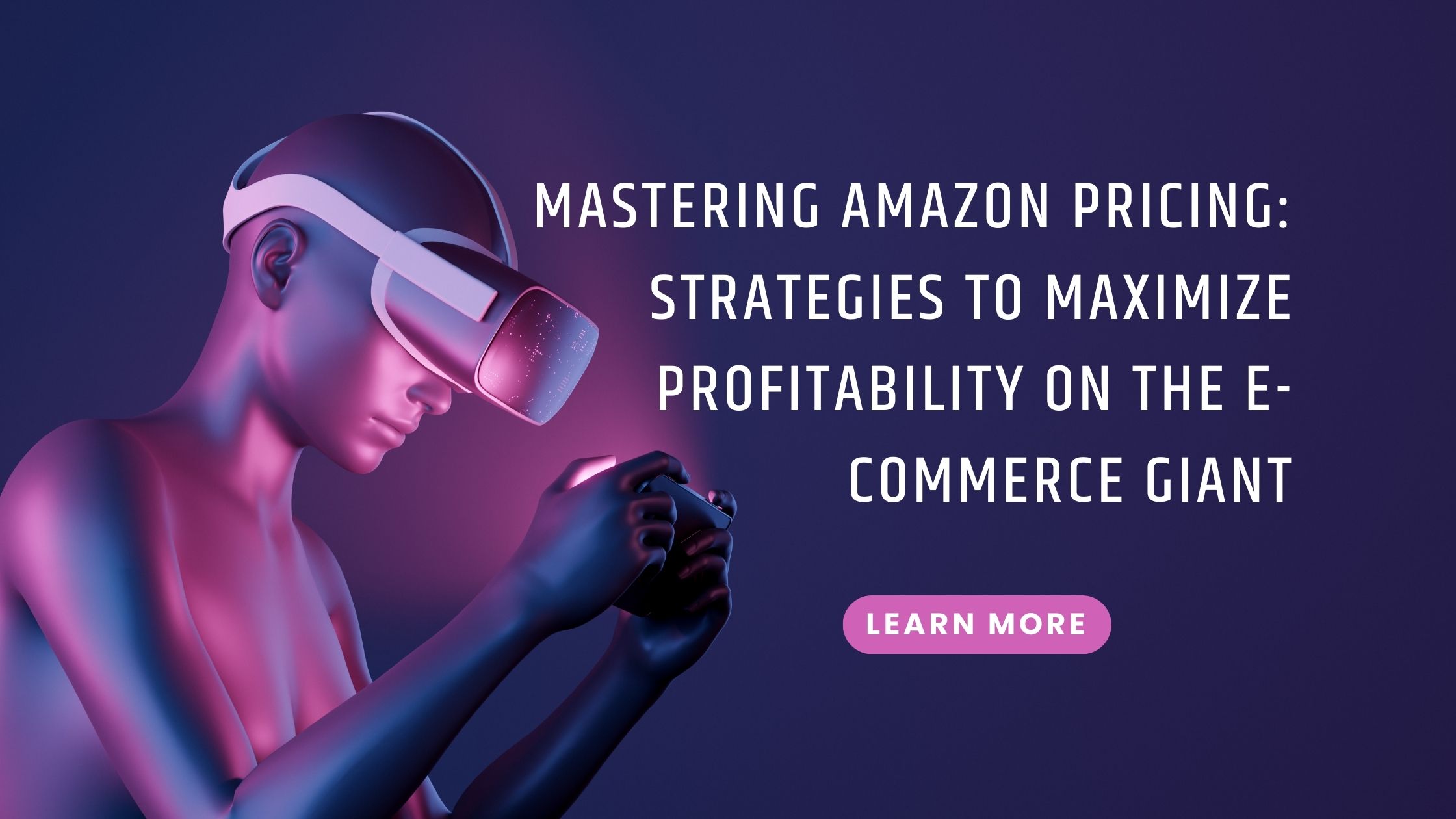Mastering Amazon Pricing: Strategies to Maximize Profitability on the E-Commerce Giant
The universe of e-commerce has revolutionized how businesses operate, and Amazon stands tall as one of the most prominent players in the industry. With many sellers and an extensive customer base, mastering Amazon’s pricing strategies is significant for boosting the profitability of this e-commerce giant. In this article, we will explore practical strategies to help sellers navigate the competitive landscape and optimize their pricing techniques. Moreover, we will delve into the importance of e-commerce website development related to Amazon to create a comprehensive selling strategy.
What is E-commerce?
Before we start, it is essential to know what e-commerce is actually about. E-commerce is a strategy for trading labor and products on the web. The meaning of e-commerce business can likewise incorporate techniques like partner showcasing. You can utilize e-commerce channels, for example, your site, a laid-out selling site like Amazon, or web-based entertainment to drive online deals.
7 Strategies to Maximize Profitability on the E-Commerce Giant
Understanding the Competitive Landscape
Successful pricing on Amazon begins with an exhaustive understanding of the competitive landscape. Directing market research to identify competitors, investigating their pricing strategies, and evaluating the demand for your items are essential steps. Tools like Jungle Scout, Helium 10, and AMZScout can provide valuable knowledge of item demand, competitor sales volumes, and pricing patterns.
Dynamic Pricing
Dynamic pricing is a strategic methodology that involves changing prices in real time based on different factors, for example, demand, competitor prices, and inventory levels. By utilizing automated repricing software like RepricerExpress or Appeagle, sellers can optimize their costs dynamically, thereby expanding sales and profitability.
Price Testing
Price testing is a valuable technique that permits sellers to experiment with different price focuses to track the ideal balance between sales volume and net revenues. By A/B testing different price focuses, sellers can gather information on customer behavior and make informed decisions on pricing strategies. Tools like Splitly and PickFu can help with directing practical price tests.
Leveraging Amazon’s Buy Box
The Purchase Box is a coveted spot on Amazon’s item detail page, as it drives most sales. Winning the Purchase Box enables sellers to maximize permeability and sales potential. Factors like competitive pricing, seller performance metrics, fulfillment choices, and customer reviews influence eligibility for the Purchase Box. Monitoring and enhancing these factors can essentially affect sales and profitability.
Packaging and Strategically pitching
Packaging-related items or offering strategic pitching choices can increase average order value and profitability. By creating attractive bundles or suggesting complementary items to customers, sellers can increase sales while keeping up with competitive pricing on individual items.
Using Amazon Advancements
Amazon offers limited-time tools like Lightning Deals, Coupons, and Subscribe and Save that can help sellers drive sales and improve profitability. These tools provide opportunities to showcase items, offer limits, and incentivize repeat purchases. By strategically utilizing these advancements, sellers can attract more customers and increase overall revenue.
Monitoring and Changing Frequently
Persistently monitoring pricing trends, customer behavior, and competitor activities is critical for long-haul success on Amazon. Regularly changing prices based on market conditions, changes in demand, or competitor activities ensures sellers stay competitive and maintain profitability. Automated tools like Camelcamelcamel and Keepa can help track price history, sales rank, and competitor pricing over time.
The Importance of E-commerce Website Development
While Amazon provides an excellent stage for selling items, having an independent e-commerce website can complement and enhance your Amazon sales. A well-designed website permits sellers to construct their image, establish credibility, and provide a unique shopping experience to customers. E-commerce website development, related to Amazon selling, creates a comprehensive strategy that permits sellers to diversify income streams and keep up with command over their sales channels.
Conclusion
Mastering pricing on Amazon is a constant process that requires strategic reasoning, market research, and versatility. By employing dynamic pricing, leading price tests, leveraging the Purchase Box, packaging items, using Amazon advancements, and persistently monitoring and changing prices, sellers can maximize profitability on the e-commerce giant. Furthermore, integrating e-commerce website development related to Amazon selling provides a chance to construct a brand, establish credibility, and create a comprehensive selling strategy. With the correct methodology, sellers can navigate the competitive landscape, draw in more customers, and achieve long-haul success on Amazon.
How To Provide The Best Customer Service In Shopify Dropshipping
How To Provide The Best Customer Service In Shopify DropshippingTo provide the best customer...
What Is Amazon Dropshipping: Guide for Beginners
What Is Amazon Dropping: Guide for BeginnersAmazon dropshipping is a business model where sellers...
How to Find Profitable Products for Amazon Dropshipping
How to Find Profitable Products for Amazon DropshippingFinding profitable products for Amazon...

